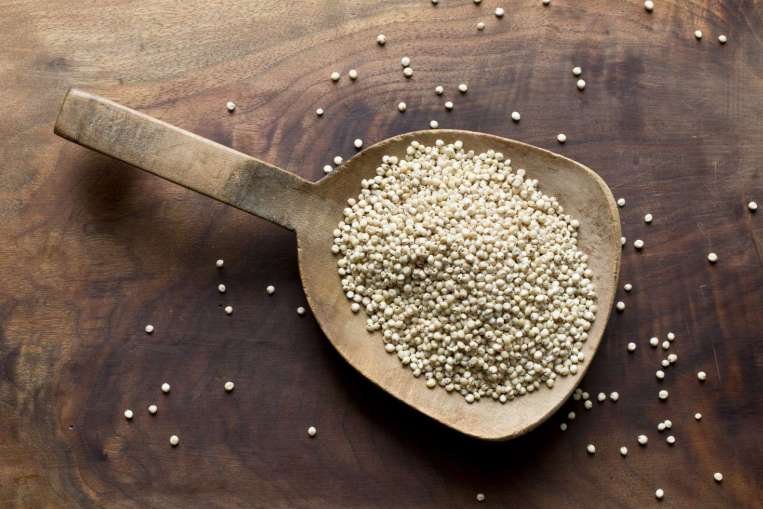Remember when wraps seemed revolutionary? Maybe you had one on your way home from an Alanis Morrisette concert in 1996.
Then you shifted into a comforting pot-roast period, followed by the martini and cupcake years. In the mid-2000s, perhaps you pivoted into a complete rejection of carbs then slid into the bacon era. Who could forget 2010, when you stood in line at a food truck playing Angry Birds on your new iPad? That line would give way to the Cronut line, the ramen line, the poke line and now the line starting over there by the empanada stand.
Predicting food trends like these has become as much an American holiday tradition as ordering an eggnog latte. (Or, this year, mixing red wine and hot chocolate.)
Each December, lists of culinary forecasts pour forth from public relations companies trying to elevate their profiles, food companies looking to sell more food and professional associations hoping to guide chefs as they try to translate the zeitgeist into menu items. Social media wonks have jumped into the pool, too, eager to show off their powerful search analytics.
Of course, the wide and bumpy field of food-trend prognostication has its share of players who build forecasts on research both qualitative and quantitative and to whom sociology matters more than popularity. Still, the practice is more art than science, often based on not much more than noting what is already percolating in big cities.
“A good trend list requires everything from data and science to pure intuition,” said Dana Cowin, a former editor-in-chief of Food & Wine who presided over the magazine’s food prediction team for 21 years.
Before we get too deep into how the nation’s top food-trend oracles practice their dark arts, you probably want to know what’s hot for 2017.
Jackfruit! Sorghum! Harissa! And don’t ignore horseradish, spirulina and Asian-inspired breakfasts. Authenticity and its cousin transparency are in. So is food inspired by Africa. Or maybe it’s The Philippines. Even French food has a constituency.
If you’re skeptical, there is good reason. Some predictions will never come true. Others may, if only because they are mentioned so often that consumers succumb to fomo (fear of missing out) and give in. See: cake pops, toast.
Many are momentary fads and sensations that the true professionals of the prophecy game dismiss as so much junk food. Rainbow bagels, adorable 3-D latte art and raindrop cake do not bona fide trends make.
Practitioners with a sociological bent are more interested in underlying shifts in culture that play out over time, like changes in the economy or immigration patterns.
“True food trends move at kind of a glacial pace,” said Annika Stensson, director of research communications for the National Restaurant Association. “It can take a decade or more to reach the mainstream.” For 11 years, Stensson has helped compile the association’s annual culinary forecast, based on a survey of about 1,300 chefs. She is particularly proud of her early success in predicting the explosion in bite-size desserts.
Bubble tea? So 2002. A Look Back at Food-Trend Predictions
- Some food-trend predictions flourish and some fizzle, but they offer a glimpse of how our cravings have (or haven’t) changed. Here is a sampling, from various sources.
- 1997. Wraps, Thai food, riesling, pot roast with mashed potatoes, soul food, Korean food, molten chocolate cake, slow-roasted everything.
- 2002. Bubble tea, cardamom, pisco sours, Portuguese food, pimentón, square plates in restaurants, purple Peruvian potatoes, heirloom beans, macaroni and cheese.
- 2006. Olive bars in supermarkets, Vietnamese food, dry-aging meat, pork belly, sugars from around the world like piloncillo, demerara and date.
- 2008. Kale, meatballs, elaborate hamburgers, izakayas, local food, upscale salt, celebrity farmers, Cambodian food, Southern food, gogi berries, Clover coffee makers.
- 2011. Macaroons, street food, food halls, black rice, Korean food (again), meatless Mondays, foraging, whoopie pies, iPad wine lists.
- 2016. Poke, plant-based proteins, Japanese food, kombucha, chickpea jerky, street food (again), turmeric, coconut, meal kits.
- 2017. Sorghum, egg yolks, French food, Filipino food, smoked food, whey, cannabis, teff, spirulina, delivery-only restaurants.
This year’s list, which includes novel cuts of meat like the Vegas strip steak, healthful children’s meals and street food, may seem dated. But that’s the idea. A fleeting fad is too frivolous to build a business on.
A perfect on-trend restaurant for 2017, Stensson said, would be a fast-casual spot serving dishes with deep, heady African flavors. The dishes should be made with locally produced ingredients, which chefs and skilled home cooks have been using for decades because they often taste better, offer more variety and can be healthier for the environment.
Today, many feel imprisoned by the locavore mandate. But for those who don’t follow food fashion, it’s coming on strong. “The primary reason is, people want to support neighbors in their own community,” Stensson said.
Cowin, late of Food & Wine, raised an eyebrow at many of this year’s breathless predictions. Vegetable butchery? “That was so five years ago,” she said.
“A good trend is like an Impressionist painting,” she added. “It’s something that looks like one thing, and then you dive in and see; it’s really a collection of many little points of paint.” Take fermentation, the darling of the 2016 forecasts. It’s not a trend unto itself, she said, but rather the culmination of several changes that began with the rising popularity of Korean food in America and a particular interest in kimchee. The farm-to-table movement, which steered cooks to pickling as a way to preserve the bounty of harvest, contributed.
Interest in fermentation got another boost from research showing the importance of gut health, which also drove interest in probiotics, which led in part to kombucha’s rise. Mix in the nascent DIY ethos and a flash of excitement about the preserving methods of Nordic cuisine, and you have the fermentation trend.
Meals in a bowl, a perennial on recent year-end lists, are another phenomenon driven by smaller engines: yoga, Gwyneth Paltrow, the gluten-free movement, a new appetite for Asian street food and the demand for grab-and-go convenience.
“We’ve got a moment when a lot of different needs are being met through this perfect little vessel,” said Willa Y. Zhen, a food anthropologist and associate professor at the Culinary Institute of America. “You know it’s really mainstream when Jimmy Dean does a bowl.”
It doesn’t hurt that food in bowls can be visually attractive, perfect for an Instagram feed. At Pinterest, which is used by 150 million people a month, Buddha bowls filled with simple vegan or vegetarian ingredients are among the top items that users post. The name evokes the mindfulness with which a monk holds a bowl of food.
“The overarching trend we are seeing is along vegan, gluten-free and clean eating,” said Stephanie Kumar, head of what Pinterest calls “category insights.” Its latest report shows that Pinterest users are also into naan pizza, zucchini chips and octopus cooked at home, possibly in sous vide machines.
The team boasts that three years ago, Pinterest foresaw that cauliflower would be big even though it had been showing up on trend lists ever since predictors flagged it in 1998, when the luxe New York restaurant Jean-Georges began serving caramelized cauliflower and sea scallops with a caper-raisin emulsion. (Purple cauliflower is the It vegetable for 2017.)
Back then, trends did not move quickly through popular culture; it might take two or three years between the time they popped up and either died or moved into the mainstream, said Phil Lempert, who started SupermarketGuru.com in 1994 and is a trend editor for the “Today” show.
“Now, with the way everyone uses social media, we’re seeing it turn around in a matter of two to three months,” Lempert said.
His forecasts are more about context – the whys behind a trend – than simply declaring that everyone will soon be eating charred vegetables and broccoli tots. Next year, he said, will bring more focus on foods that help with detoxification, weight loss and relaxation.
Lempert is also excited about cellular agriculture, in which companies engineer tissue to create meat and dairy products without an actual animal. It’s a natural extension of the new wave of animal-free proteins that mimic milk or beef, like vegetarian hamburgers that appear to bleed.
Kevan Vetter, the executive chef at McCormick & Company, has led the team that assembles the annual McCormick flavor forecast for 17 years. Its report draws on global field research to identify trends that have blossomed enough to appeal to a mass audience, one that presumably will buy McCormick products.
Vetter is proud that he predicted chipotle and wasabi as breakout flavors in the early 2000s. His biggest miss was chai, a flavor he thought would cross over from beverages into desserts and other dishes.
His new report calls 2017 the year of the egg yolk. Spanish flavors and the Middle Eastern spice mix called baharat will take off, it says. He is also high on sorghum grain bowls for breakfast and foods grilled on a plancha.
One of his favorites didn’t make the list. “I really feel like matcha is going to have some legs,” he said.
Lynn Dornblaser, the director of innovation and insight for Mintel, has been trend-spotting for 30 years.
“You do it long enough, and you’ve seen everything,” she said. Almost every food trend, she said, can fit into one of several categories, among them health, convenience, indulgence and the environment. Mintel this year highlights food that is smoked or grilled, main-course vegetables, and the flavors of Africa, Korea and the Philippines.
The most important development on her list, she said, is the idea that healthful food and drinks are not luxuries. It’s a populist notion: Retailers and restaurants will start catering to lower-income consumers who want high-quality food that is as nutritious as it is delicious, she said, pointing to the growing sales of imperfect fruits and vegetables, often marketed as “ugly produce.” “People who earn less than $50,000 a year are not buying gourmet olive oil or having Blue Apron delivered,” she said. “But they’ve got a need for quality products just like everyone else does.”

